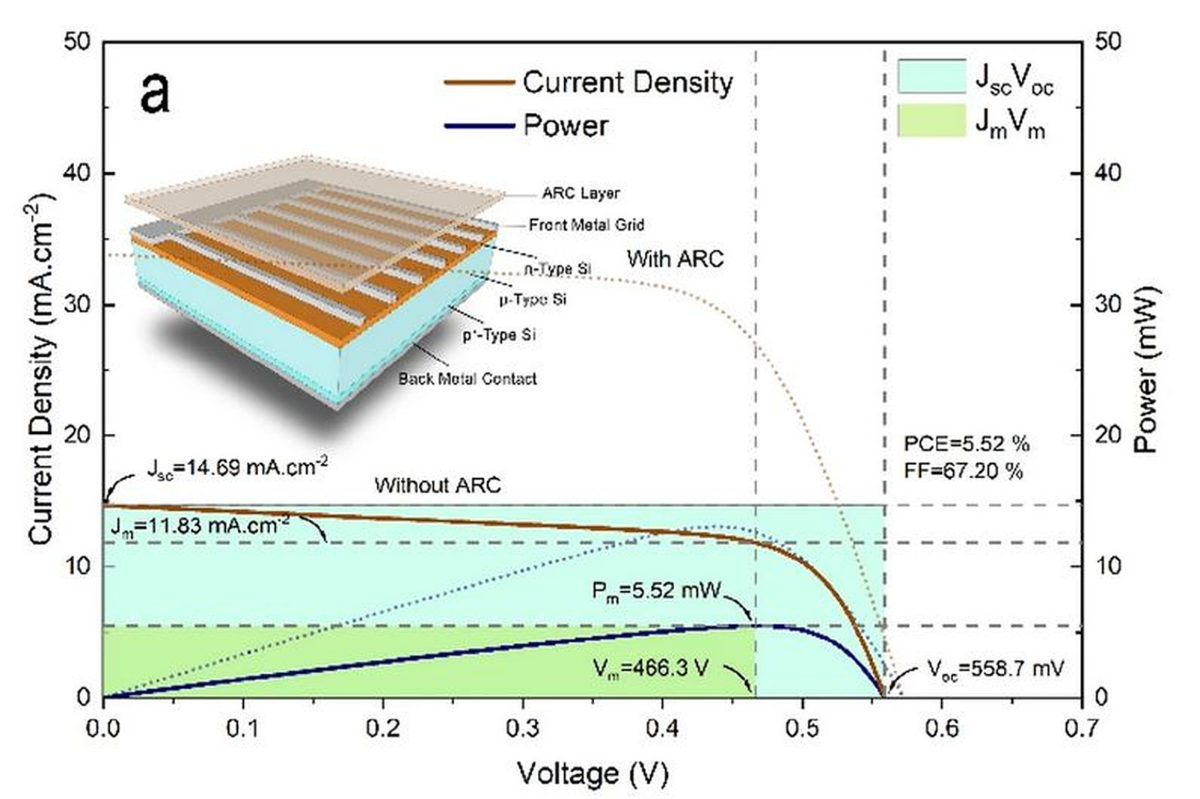Researchers at the University of Technology-Iraq have developed a novel dual-function anti-reflection coating (ARC). They said it can significantly improve the power conversion efficiency of commercial crystalline silicon solar cells.
The coating is based on an amorphous carbon nitride (CNx) thin film that was synthesized by the radio frequency (RF) magnetron sputtering technique. The approach involves alternating the electrical potential of the current in a vacuum environment.
“This technique has an advantage over others in that it allows for precise control of deposition rate and thickness uniformity while using low-cost starting materials and producing no toxic byproducts,” the scientists explained. “We investigated the influence of deposition temperature and time on the properties of amorphous carbon nitride films deposited on glass and silicon substrates.”
They said that CNx films are suitable for applications in solar cells, due to their indirect bandgap, excellent mechanical strength, high thermal stability, low reflectivity, and high transmission. They investigated these properties and their impact on solar cell performance via field emission scanning electron microscope (FESEM) and an atomic force microscope (AFM). The films were deposited at different temperatures.
Their measurements showed that the films exhibit a high optical transmission in the range of 200 nm to 2500 nm. Films deposited at a lower temperature are much more transparent than films deposited at a higher temperature.
Popular content
“The transmission of the film prepared at room temperature was 91% at 550 nm. Whereas the optical transmission of the film prepared at 200 C decreased to 81% at 550 nm. The films have a transmission of between 52% to 96% in the visible region (350 nm to 780 nm) and higher than 89% in the near-infra-red (NIR) region,” the group said, noting that the increase in nitrogen content in the film structure results in an increase in the optical energy gap.
The film was then deposited over commercial c-Si solar cells at a deposition time and temperature of 120 minutes and 200 C, respectively, and the performance of the solar devices was measured under standard illumination conditions. Their short circuit current increased from 14.69 to 33.85 mAcm−2 and the efficiency climbed from 5.52% to 13.05%.
“In principle, the effect of the short-circuit current reflects the actual efficiency of the ARC, since it is directly related to the reduction of the surface reflectance and hence increases the photocurrent generated by the photons absorbed in the solar cell,” they said, noting that the open-circuit voltage increased slightly and that its fill factor was almost equal to that of the uncoated cell.
“This study shows that CNx films have promising application potential as an efficient ARC for c-Si solar cells as compared to traditional ARC materials,” the academics concluded, without providing details on the costs of the proposed technology. They introduced the novel coating technology in “Amorphous carbon nitride dual-function anti-reflection coating for crystalline silicon solar cells,” which was recently published in Scientific Reports.
This content is protected by copyright and may not be reused. If you want to cooperate with us and would like to reuse some of our content, please contact: editors@pv-magazine.com.



By submitting this form you agree to pv magazine using your data for the purposes of publishing your comment.
Your personal data will only be disclosed or otherwise transmitted to third parties for the purposes of spam filtering or if this is necessary for technical maintenance of the website. Any other transfer to third parties will not take place unless this is justified on the basis of applicable data protection regulations or if pv magazine is legally obliged to do so.
You may revoke this consent at any time with effect for the future, in which case your personal data will be deleted immediately. Otherwise, your data will be deleted if pv magazine has processed your request or the purpose of data storage is fulfilled.
Further information on data privacy can be found in our Data Protection Policy.